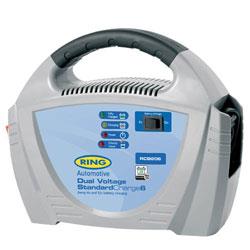- Joined
- 27 Jan 2008
- Messages
- 25,087
- Reaction score
- 2,915
- Location
- Llanfair Caereinion, Nr Welshpool
- Country

Bulbs like this one
 20mW 6V polarity sensitive at £5 for pack of 5 would likely work OK at 0.005 amp not sure of your bulb base but viewing angles vary and also colour with white and warm white and as Bernard says much will depend on what you are studying. The advantage of LED is when studying items in liquid it has very little or no heat so does not dry it out. They also last a long time.
20mW 6V polarity sensitive at £5 for pack of 5 would likely work OK at 0.005 amp not sure of your bulb base but viewing angles vary and also colour with white and warm white and as Bernard says much will depend on what you are studying. The advantage of LED is when studying items in liquid it has very little or no heat so does not dry it out. They also last a long time.
My interest is general photography and the microscope was the next stage with macro. However it is not as good as expected one because the camera resolution is low, two flat items have different focus edge to centre, three the table will not drop low enough to put items like a watch under it. However bryophytes between two slides keeping them flat does work but the idea of taking samples to place under the microscope goes against the grain I want to where possible take pictures of the items in their environment. Using close-up filters and bellows in the main works better I can take a series of photos with overview and close up showing the environment as well as the item in question.
The ability to close the aperture on the camera means I get a far better depth of field so less stacking of images is required. However this means very little light gets to the camera CCD so I need very high light levels or very long exposure. I have used battery powered LED light strips and long exposure and flash guns. The latter was a problem as the lens tends to shield the light so I use two flash guns a slave triggered from the main one.
The colour spectrum I test with a CD. By angling a CD and looking at the reflection of a light source one can see the spectrum and if colours blend or have sharp lines where they change. The CFL has rather sharp lines but the LED is more gradual.
Your unit is it would seem far more powerful to mine so would need better lighting but since LED bulbs are DC I would look for a DC power supply so you could use LED in the future.
The simple charger like this
 will likely work well but the more complex have electronics in so for you cheap is good. But if moving to LED then you need less power so a Wall plug type would have enough power. Do not buy one that says "stage" these are not suitable for what you want. You want a cheap type should according to output required be £10 to £25.
will likely work well but the more complex have electronics in so for you cheap is good. But if moving to LED then you need less power so a Wall plug type would have enough power. Do not buy one that says "stage" these are not suitable for what you want. You want a cheap type should according to output required be £10 to £25.

My interest is general photography and the microscope was the next stage with macro. However it is not as good as expected one because the camera resolution is low, two flat items have different focus edge to centre, three the table will not drop low enough to put items like a watch under it. However bryophytes between two slides keeping them flat does work but the idea of taking samples to place under the microscope goes against the grain I want to where possible take pictures of the items in their environment. Using close-up filters and bellows in the main works better I can take a series of photos with overview and close up showing the environment as well as the item in question.
The ability to close the aperture on the camera means I get a far better depth of field so less stacking of images is required. However this means very little light gets to the camera CCD so I need very high light levels or very long exposure. I have used battery powered LED light strips and long exposure and flash guns. The latter was a problem as the lens tends to shield the light so I use two flash guns a slave triggered from the main one.
The colour spectrum I test with a CD. By angling a CD and looking at the reflection of a light source one can see the spectrum and if colours blend or have sharp lines where they change. The CFL has rather sharp lines but the LED is more gradual.
Your unit is it would seem far more powerful to mine so would need better lighting but since LED bulbs are DC I would look for a DC power supply so you could use LED in the future.
The simple charger like this


